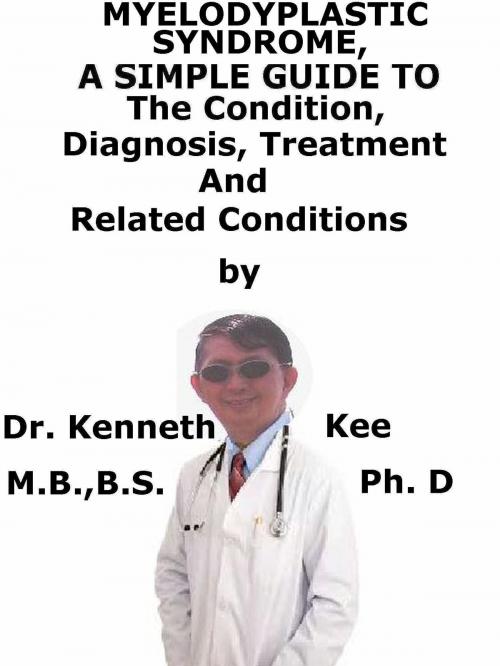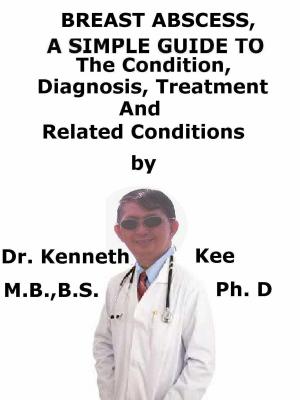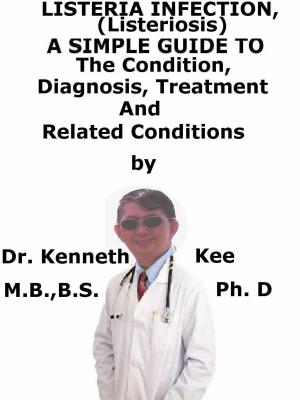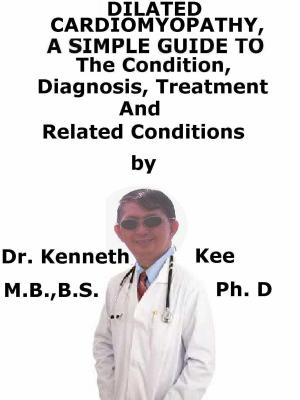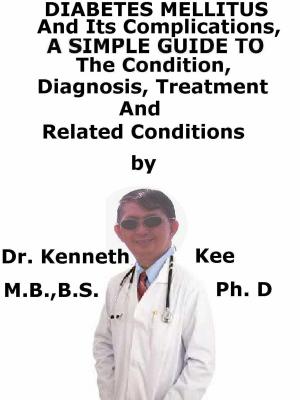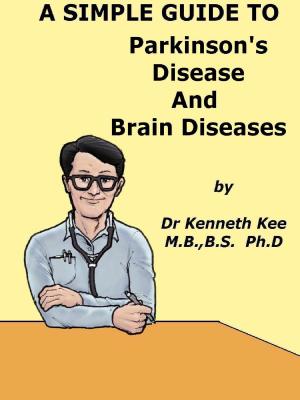Myelodysplastic Syndrome, A Simple Guide To The Condition, Diagnosis, Treatment And Related Conditions
Nonfiction, Health & Well Being, Medical, Specialties, Internal Medicine, Hematology| Author: | Kenneth Kee | ISBN: | 9781370855056 |
| Publisher: | Kenneth Kee | Publication: | March 26, 2018 |
| Imprint: | Smashwords Edition | Language: | English |
| Author: | Kenneth Kee |
| ISBN: | 9781370855056 |
| Publisher: | Kenneth Kee |
| Publication: | March 26, 2018 |
| Imprint: | Smashwords Edition |
| Language: | English |
This book describes Myelodysplastic Syndrome (Refractory Anemia), Diagnosis and Treatment and Related Diseases
Myelodysplastic syndrome (MDS) is a cluster of disorders when the blood cells formed in the bone marrow do not mature into healthy cells.
This leaves the person with fewer healthy blood cells in the body, mainly immature blood cells.
The blood cells that do not matured may not work properly.
Myelodysplastic syndrome (MDS) can be a form of cancer.
In about a third of people, MDS may become acute myeloid leukemia.
Causes
Stem cells in bone marrow form different types of blood cells.
With MDS, the DNA in stem cells becomes injured.
Since the DNA is injured, the stem cells cannot produce healthy blood cells.
Risk factors for MDS are:
1.Certain genetic disorders
2.Exposure to environmental or industrial chemicals, fertilizers, pesticides, solvents, or heavy metals
3.Smoking
Previous cancer treatment increases the risk for MDS.
This is called secondary or treatment-linked MDS.
1.Certain chemotherapy drugs
2.Radiation therapy
People who have stem cell transplants may form MDS because they also have been given high doses of chemotherapy.
MDS normally happens in adults age of 60 years and older.
It is more frequent in men.
Symptoms
Early phase MDS often has no symptoms.
MDS is often found during other blood tests.
People with very low blood counts often have symptoms.
Symptoms are dependent on the type of blood cell affected, and they are:
1.Weakness or tiredness due to anemia
2.Shortness of breath
3.Easy bruising and bleeding
4.Small red or purple pinpoint dots under the skin caused by bleeding
5.Frequent infections and fever
Diagnosis:
People with MDS have a shortage of blood cells.
MDS may reduce the number of one or more of these:
1.Red blood cells
2.White blood cells
3.Platelets
The shapes of these cells may also get changed.
Investigations:
1.Full blood count
2.Cytochemistry, flow cytometry, immunocytochemistry, and immunophenotyping tests
3.Cytogenetics and fluorescent in situ hybridization (FISH) are used for genetic analysis.
FISH is used to identify specific changes within chromosomes.
4.Genetic variations may help determine response to treatment.
5.Bone marrow aspiration and biopsy.
Treatment
The treatment will depend on several factors:
1.Whether the patient is low-risk or high-risk
2.The type of MDS the patient has
3.The age, health, and other conditions the patient may have, such as diabetes or heart disease
The purpose of MDS treatment is to prevent problems due to a shortage of blood cells, infections and bleeding.
It may consist of:
1.Blood transfusion
2.Drugs that promote the production of blood cells
3.Drugs that suppress the immune system
4.Low-dose chemotherapy to improve blood cell counts
5.Stem cell transplantation
Patients with low-danger, slow acting MDS may need no active treatment but are normally monitored in a hematology clinic.
In lower-risk MDS, the risk of AML progression is smaller and survival longer than in higher-risk MDS
In lower-risk MDS, the main priority is generally the treatment of cytopenias, mainly of anemia and improving quality of life.
Anemia often eventually requires repeated red blood cell transfusions, leading to potential iron overload.
Anemia and thrombocytopenia
In symptomatic anemia, in those with anemia-related cardiovascular disease, bleeding episodes and high risk of significant bleeds, treatment is supportive blood and platelet transfusions
While high-dose chemotherapy may cure a small subset of patients with MDS, allogeneic hematopoietic cell transplantation is the only currently available modality that is curative in a large proportion of patients.
TABLE OF CONTENT
Introduction
Chapter 1 Myelodysplastic Syndrome
Chapter 2 Causes
Chapter 3 Symptoms
Chapter 4 Diagnosis
Chapter 5 Treatment
Chapter 6 Prognosis
Chapter 7 Leukemia
Chapter 8 Anemia
Epilogue
This book describes Myelodysplastic Syndrome (Refractory Anemia), Diagnosis and Treatment and Related Diseases
Myelodysplastic syndrome (MDS) is a cluster of disorders when the blood cells formed in the bone marrow do not mature into healthy cells.
This leaves the person with fewer healthy blood cells in the body, mainly immature blood cells.
The blood cells that do not matured may not work properly.
Myelodysplastic syndrome (MDS) can be a form of cancer.
In about a third of people, MDS may become acute myeloid leukemia.
Causes
Stem cells in bone marrow form different types of blood cells.
With MDS, the DNA in stem cells becomes injured.
Since the DNA is injured, the stem cells cannot produce healthy blood cells.
Risk factors for MDS are:
1.Certain genetic disorders
2.Exposure to environmental or industrial chemicals, fertilizers, pesticides, solvents, or heavy metals
3.Smoking
Previous cancer treatment increases the risk for MDS.
This is called secondary or treatment-linked MDS.
1.Certain chemotherapy drugs
2.Radiation therapy
People who have stem cell transplants may form MDS because they also have been given high doses of chemotherapy.
MDS normally happens in adults age of 60 years and older.
It is more frequent in men.
Symptoms
Early phase MDS often has no symptoms.
MDS is often found during other blood tests.
People with very low blood counts often have symptoms.
Symptoms are dependent on the type of blood cell affected, and they are:
1.Weakness or tiredness due to anemia
2.Shortness of breath
3.Easy bruising and bleeding
4.Small red or purple pinpoint dots under the skin caused by bleeding
5.Frequent infections and fever
Diagnosis:
People with MDS have a shortage of blood cells.
MDS may reduce the number of one or more of these:
1.Red blood cells
2.White blood cells
3.Platelets
The shapes of these cells may also get changed.
Investigations:
1.Full blood count
2.Cytochemistry, flow cytometry, immunocytochemistry, and immunophenotyping tests
3.Cytogenetics and fluorescent in situ hybridization (FISH) are used for genetic analysis.
FISH is used to identify specific changes within chromosomes.
4.Genetic variations may help determine response to treatment.
5.Bone marrow aspiration and biopsy.
Treatment
The treatment will depend on several factors:
1.Whether the patient is low-risk or high-risk
2.The type of MDS the patient has
3.The age, health, and other conditions the patient may have, such as diabetes or heart disease
The purpose of MDS treatment is to prevent problems due to a shortage of blood cells, infections and bleeding.
It may consist of:
1.Blood transfusion
2.Drugs that promote the production of blood cells
3.Drugs that suppress the immune system
4.Low-dose chemotherapy to improve blood cell counts
5.Stem cell transplantation
Patients with low-danger, slow acting MDS may need no active treatment but are normally monitored in a hematology clinic.
In lower-risk MDS, the risk of AML progression is smaller and survival longer than in higher-risk MDS
In lower-risk MDS, the main priority is generally the treatment of cytopenias, mainly of anemia and improving quality of life.
Anemia often eventually requires repeated red blood cell transfusions, leading to potential iron overload.
Anemia and thrombocytopenia
In symptomatic anemia, in those with anemia-related cardiovascular disease, bleeding episodes and high risk of significant bleeds, treatment is supportive blood and platelet transfusions
While high-dose chemotherapy may cure a small subset of patients with MDS, allogeneic hematopoietic cell transplantation is the only currently available modality that is curative in a large proportion of patients.
TABLE OF CONTENT
Introduction
Chapter 1 Myelodysplastic Syndrome
Chapter 2 Causes
Chapter 3 Symptoms
Chapter 4 Diagnosis
Chapter 5 Treatment
Chapter 6 Prognosis
Chapter 7 Leukemia
Chapter 8 Anemia
Epilogue
